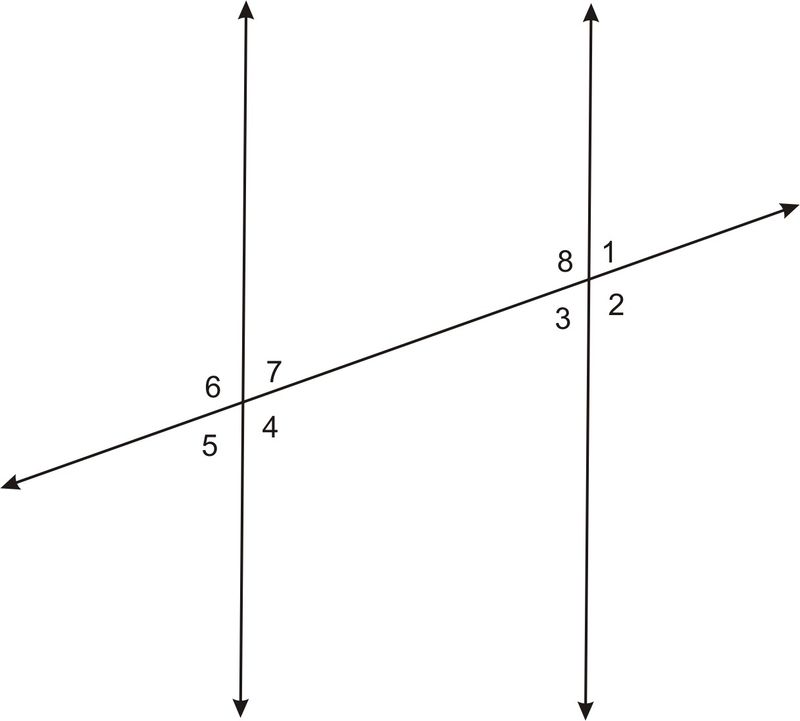A line going side-to-side, like the horizon.
What is a horizontal line?
An angle that is exactly 90 degrees
What is a right angle?
Two angles, that when combined, have a sum of 90 degrees.
What are complementary angles?
Angles 3, 4, 5, and 6
What are interior angles?
The point of intersection of an angle
What is a vertex?
A line that goes straight up and down.
What is a vertical line?
An angle that is less than 90 degrees
What is an acute angle?
Two angles, that when combined, have a sum of 180 degrees
What are supplementary angles?
Angles 6, 5, 1, and 2
What are exterior angles?
A unit to measure angles
What is a degree?
A part of a line with a start point but no end point (it goes to infinity)
What is a ray?
An angle that is exactly 180 degrees
What is a straight angle?
Two angles that share a common ray and common vertex
What are adjacent angles?
Angle pairs 7 and 3, and 8 and 4
What are alternate interior angles?
A tool with which to measure angles
What is a protractor?
Lines that are at right angles (90 degrees) to each other.
What are perpendicular lines?
An angle that is greater than 90 degrees, but less than 180 degrees.
What is an obtuse angle?
Two congruent angles formed by intersecting lines that share a common vertex
What are vertical angles?
Angle pairs 1 and 8, and 2 and 7
What are alternate exterior angles?
Any angle not a multiple of 90
What is an oblique angle?
Lines that never intersect and are always the same distance apart.
What are parallel lines?
An angle that measures more than 180 degrees, but less than 360 degrees.
What is a reflex angle?
Two angles, that when combined, have a sum of 360 degrees.
What are explementary angles?
Angle pairs 2 and 6, 4 and 8, 1 and 5, 3 and 7
What are corresponding angles?
An angle that measures 360 degrees
What is a perigon?

